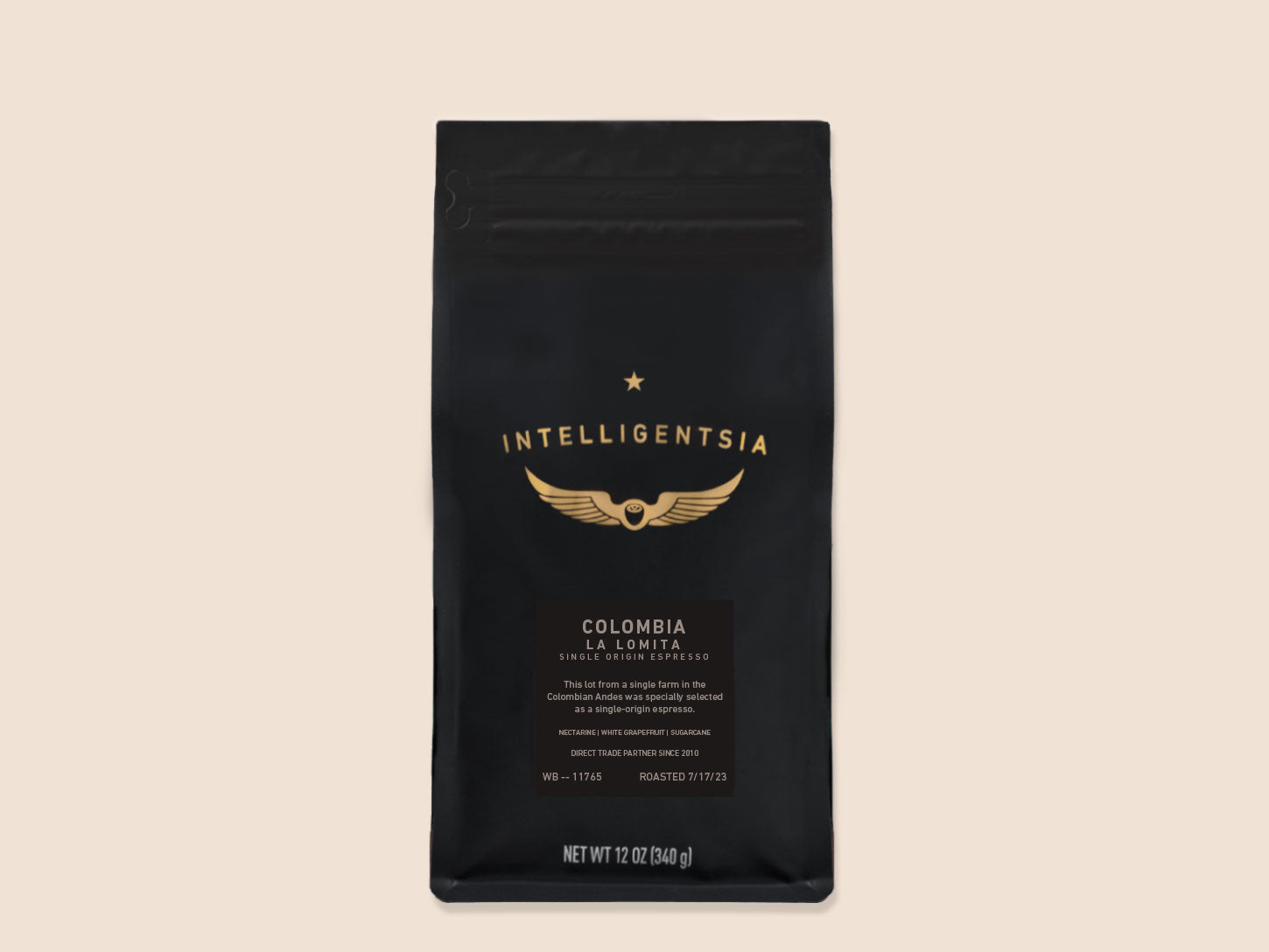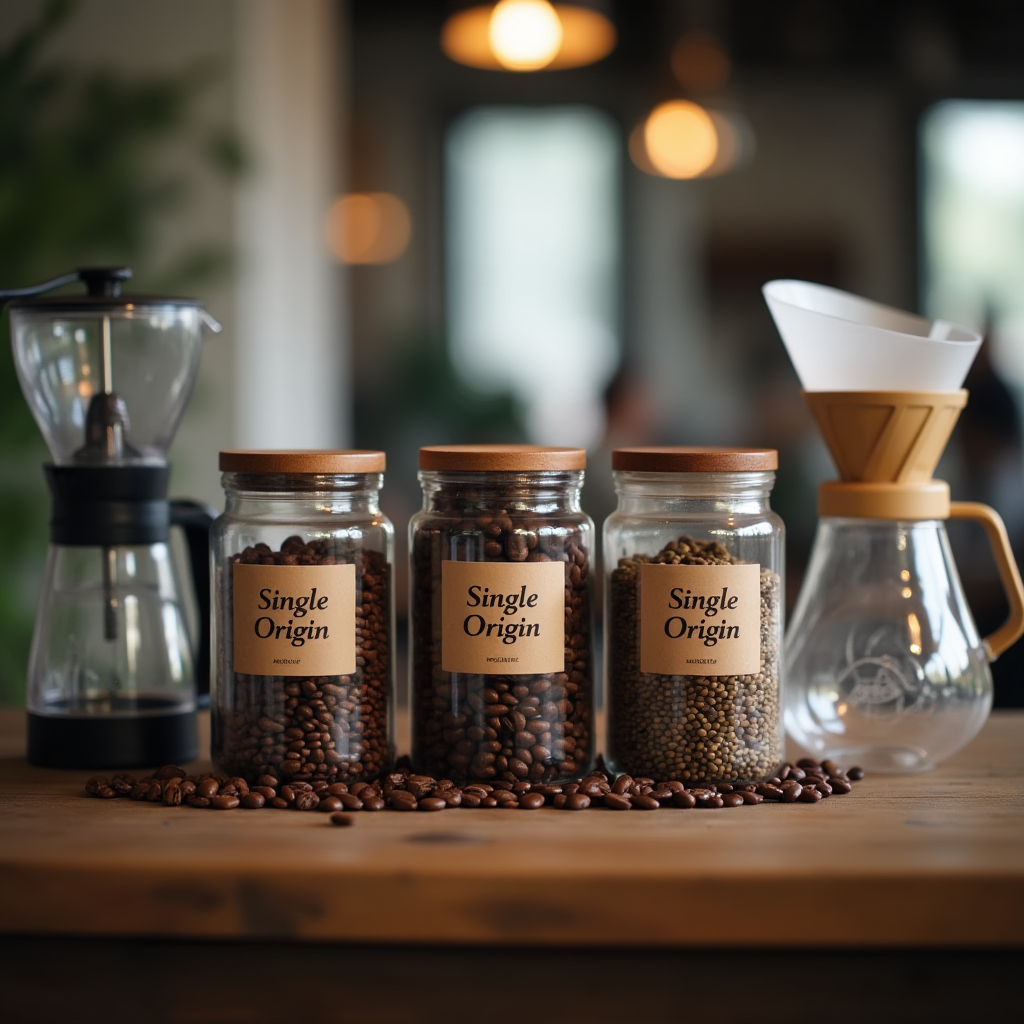Why Espresso Fans Prefer SOE Single Origin Espresso for Authenticity
Wiki Article
Coffee Beans 101: Everything You Need to Understand About Espresso and Blended Coffee Beans
When it involves coffee, recognizing the nuances of coffee and mixed beans can transform your day-to-day cup. You'll discover the distinct characteristics of Arabica and Robusta beans, and just how each influences flavor and caffeine web content. From the growing procedure to roasting methods, every step plays a duty in your coffee experience. What makes the ideal brew? Let's discover the vital components that add to an exceptional mug of coffee.Comprehending Coffee Beans: Selections and types
When diving right into the world of coffee, comprehending the types and selections of coffee beans is important for every enthusiast. Arabica beans are understood for their smooth, complicated tastes and reduced caffeine content, making them a favored amongst coffee enthusiasts.Ethiopian Yirgacheffe offers bright floral notes, while Colombian beans offer a healthy taste account. By acquainting yourself with these beans and their flavors, you'll raise your coffee experience and make even more educated selections in your developing journey.
The Growing Process: From Seed to Bean
When you discover the trip of coffee, all of it beginnings with seed choice methods that establish the foundation for high quality. From there, growing and gathering play necessary functions in guaranteeing the beans flourish. Handling approaches change those gathered cherries right into the coffee beans you like.Seed Selection Methods
Choosing the ideal seeds is necessary for producing high-grade coffee beans, as it lays the structure for the entire expanding procedure. You need to start by choosing seeds from trustworthy sources that focus on quality and genetic diversity. Search for selections known to prosper in your particular climate and soil problems. Take notice of the seed's age and storage space conditions, as fresh seeds have a tendency to germinate far better. When feasible, go with organic seeds to minimize exposure to harmful chemicals. Consider the illness resistance of various varieties, as this can greatly influence your yield. Don't hesitate to consult with local farmers or experts to get insights into the best seed options for your region. This understanding will enhance your coffee-growing experience.Farming and Harvesting
As you support your coffee seeds right into flourishing plants, understanding the farming and harvesting process is essential for accomplishing the best flavor and top quality. Beginning by planting your seeds in well-draining soil, ideally in a shaded location to secure them from straight sunshine.When it comes time to harvest, search for ripe cherries, which typically turn a vivid red. Hand-picking is often the most effective method to assure only the ripest cherries are picked. Timing is important; harvesting as well early or too late can influence the flavor profile of your beans. Embrace patience and treatment, as this is where top quality starts.

Processing Methods Described
As soon as you have actually gathered your coffee cherries, the following important step is processing them to change those vibrant fruits into the beans you'll make. There are 2 main methods: the damp process and the completely dry procedure. In the dry procedure, you spread out the cherries out in the sun to completely dry, enabling the fruit to ferment and present special flavors to the beans. On the various other hand, the damp process entails getting rid of the fruit instantly and fermenting the beans in water, causing a cleaner taste. After processing, the beans are hulled, arranged, and generally dried out once more. Each approach influences the taste profile, so explore both can help you uncover your preferred mixture. Understanding these approaches is key to enjoying your coffee experience.Toasting Strategies: How Flavor Is Established
When it pertains to toasting coffee beans, recognizing roast levels is key to revealing their one-of-a-kind tastes. Each roasting strategy impacts the fragrance and boosts the flavor advancement process, giving you a richer coffee experience. Allow's explore just how these aspects come with each other to boost your everyday mixture.Roast Degrees Described
Roast degrees play an essential role fit the taste account of your coffee. You'll delight in bright acidity and fruity notes when you choose a light roast. As you move to a medium roast, you'll discover an equilibrium of sweetness and intricacy, commonly highlighting chocolate or sugar tastes. Dark roasts, on the other hand, supply strong, great smoky attributes with less level of acidity, making them robust and rich. Each level results from various roasting times and temperatures, affecting the beans' chemical make-up. By understanding these degrees, you can better select a coffee that matches your preference choices. Experiment with various roasts to find which one resonates with you, enhancing your overall coffee experience and pleasure.Influence on Scent
The roast degree not just influences the preference of your coffee but also substantially influences its aroma. When you select a light roast, you'll commonly notice bright, flower notes that can make your coffee scent vibrant and fresh. As the beans dim, the fragrance changes; a medium roast highlights more well balanced, caramelized fragrances, while a dark roast often tends to feature bold, smoky touches. Each roasting technique launches various volatile substances, forming how your coffee smells. Additionally, the quality of the beans plays a critical function; freshly baked coffee releases extra fragrant oils, enhancing that luring scent. So, focus on the roast degree-- it's crucial to disclosing the full aromatic experience of your mixture.Taste Advancement Refine
As you discover the taste development procedure, you'll find that toasting techniques play a critical function in shaping the taste profile of your coffee. The roasting temperature and time straight affect the acidity, sweet taste, and bitterness of the beans. Light roasts keep even more of the bean's initial tastes, highlighting fruity and flower notes.Coffee vs. Blended Coffee: Secret Distinctions
Espresso and blended coffee each offer one-of-a-kind experiences that satisfy different tastes and choices. Coffee is a focused coffee made by compeling warm water through finely-ground coffee beans, leading to a rich, vibrant taste and a luscious layer of crema ahead. It's usually delighted in as a shot or utilized as a base for beverages like lattes and coffees.On the other hand, blended coffee integrates different beans from different areas, developing a much more well balanced taste account. You'll frequently discover blends that highlight body, sweet taste, or level of acidity, making them functional for different developing approaches. While coffee concentrates on strength, blended coffee may provide a broader variety of tastes that can transform with each sip.
Inevitably, your choice between coffee and blended coffee boils down to your personal choice. Whether you long for a leisurely mug or a fast jolt, both alternatives have something scrumptious to use.

Brewing Methods: Unlocking the Perfect Mug
When it involves developing coffee, locating the right approach can transform your experience and boost your cup. Each brewing technique has its one-of-a-kind beauty and can substantially impact your coffee's flavor and aroma. For instance, utilizing a French press allows you to delight in a abundant and full-bodied brew, while a pour-over approach offers a clean, intense mug with unique tastes.If you prefer espresso, investing in a quality device can aid you master the art of pulling shots. Alternatively, for comfort, a single-serve hull system provides speed without giving up taste.
Do not forget cool brew, which delivers a smooth, much less acidic coffee perfect for hot days. Experiment with different methods to find what reverberates with your taste buds. Each brewing technique opens a new world of opportunities, so put in the time to discover and locate your excellent mug. Delighted brewing!
Sampling Notes: Determining Flavor Profiles
Exactly how can you really value your coffee if you don't recognize what tastes to look for? Tasting notes are your overview to comprehending the intricate globe of coffee. Some coffees may leave a chocolatey or sugar aftertaste, while SOE others might have an intense, clean finish.Consider the body of the coffee, too; is it airy and light or thick and syrupy? Don't fail to remember level of acidity; a brilliant acidity can add liveliness, while a reduced acidity may offer a smoother experience. By recognizing these flavor profiles, you'll strengthen your connection with each cup, making coffee tasting a delightful trip of exploration.

Tips for Selecting and Storing Coffee Beans
Saving and picking coffee beans properly can greatly improve your developing experience. Begin by picking high-quality beans that fit your preference - SOE.When you have your beans, keep them in an impermeable container to avoid direct exposure to air, light, and dampness. A dark, cool area works best, so prevent keeping them in the fridge or fridge freezer, as this can introduce wetness. Just grind the amount you need to preserve freshness; whole beans maintain taste longer than pre-ground coffee.
Finally, attempt to utilize your beans within two to four weeks after opening for peak preference. Complying with these ideas will certainly assure your coffee stays flavorful and enjoyable, boosting your daily mixture to brand-new elevations.
Frequently Asked Questions
How Much Time Do Coffee Beans Stay Fresh After Toasting?
Coffee beans stay fresh for about 2 weeks after roasting - SOE. You should save them in a closed container, away from light and dampness. After that, their flavor and fragrance begin to lessen substantially
Can I Mix Different Coffee Bean Varieties?
Absolutely, you can blend different coffee bean varieties! Trying out with blends can boost tastes and create a special taste profile. Simply see to it to balance the strengths and characteristics of each variety for the ideal outcomes.What Is the Ideal Grind Size for Coffee?
For espresso, you'll desire a fine grind dimension, regarding the texture of common salt. This enables ideal extraction, resulting in a rich, savory shot. Experiment a bit to locate what fits your preference best!How Does Elevation Affect Coffee Bean Flavor?
Altitude impacts coffee bean taste by influencing the development rate and chemical make-up. Greater elevations cause slower growth, which improves level of acidity and complexity, providing your coffee a unique and lively preference you will not fail to remember.Are There Decaffeinated Variations of Espresso Beans?
Yes, there are decaffeinated versions of coffee beans. You can delight in a rich espresso taste without the high levels of caffeine kick. Simply look for "decaf" blends at your neighborhood cafe or specialty shop.Coffee Beans 101: Everything You Required to Know About Coffee and Blended Coffee Beans.
When diving into the globe of coffee, recognizing the kinds and selections of coffee beans is necessary for every fanatic.When it comes to roasting coffee beans, recognizing roast degrees is vital to revealing their distinct flavors. Espresso is a concentrated coffee brewed by forcing warm water via finely-ground coffee beans, resulting in a rich, vibrant flavor and a velvety layer of crema on top.On the other hand, blended coffee integrates various beans from different regions, developing a more balanced flavor account.
Report this wiki page